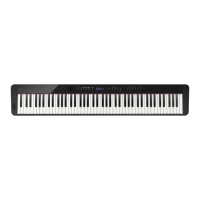
Do you have a question about the Casio PX-S3100BK and is the answer not in the manual?
| Category | Digital Piano |
|---|---|
| Model | PX-S3100BK |
| Number of Keys | 88 |
| Key Action | Hammer Action |
| Sound Engine | AiR Sound Source |
| Polyphony (Maximum) | 192 |
| Number of Tones | 700 |
| Metronome | Yes |
| Amplifiers | 8W + 8W |
| Weight | 11.2 kg |
| Touch Sensitivity | 3 sensitivity levels, off |
| Effects | Reverb, Chorus, Brilliance |
| Recorder | 2-track recorder |
| Connectivity | Audio In, Audio Out, Headphone Out |
| Dimensions | 1322 x 232 x 102 mm |
| Included Accessories | Music rest, power adapter, SP-3 pedal |
Instructions for using the AC adaptor for power.
Instructions for installing and using batteries.
Alert function to remind users that power is on.
How to adjust the display contrast.
Prevents operational errors by disabling button operations.
Resets stored data and settings to factory defaults.
Automatically turns off power after a period of inactivity.
Connecting the supplied pedal to the damper pedal jack.
Select pedal functions for the damper pedal.
Adjusts the sensitivity of touch buttons.
Tones are divided into six categories.
Adjust volume, octave, and tuning for each part.
Control pedal/wheel effects per part.
Adjust the main keyboard volume level.
Raise or lower the overall pitch in semitone steps.
Raise or lower pitch in octave units for the Upper1 part.
Turn sound mode effects on or off.
Select specific Hall Simulator/Reverb types.
Select a Digital Signal Processor effect.
Configure parameters for selected DSP modules.
Assign functions to the K1 and K2 knobs.
Turn the arpeggiator function on.
Enables and configures Duet Mode.
Adjust octave settings for duet keyboards.
Select from 17 preset scales or change base note.
Enable or disable piano stretch tuning.
Start auto accompaniment by playing a chord.
Automatically configures settings for a selected rhythm.
Select one of 12 auto harmonize types.
Set the tempo using buttons.
Adjust tempo by tapping keys or pedals.
Instantly change settings for song genres.
Describes memory locations for storing setups.
Save current piano settings to memory.
Load previously saved settings.
Assign a pedal to cycle through registered setups.
Details on what data can be recorded per track.
Prepare the digital piano for MIDI recording.
Actions that initiate recording.
Set pre-count, metronome, beat, and punch-in measure.
Delete an entire MIDI recorder song.
Delete a specific track from a MIDI song.
Switch the piano to Audio Mode for recording.
Select and play MIDI songs from memory or USB.
Change settings using the FUNCTION Mode menu.
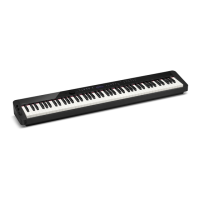
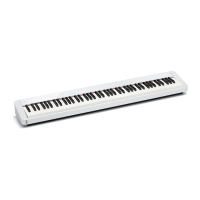

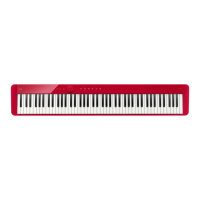
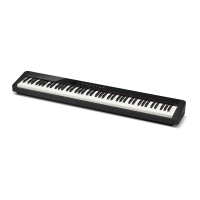
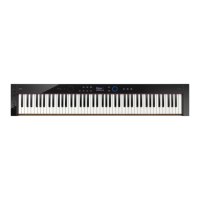
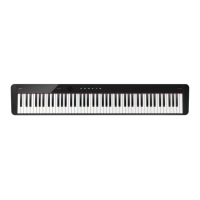
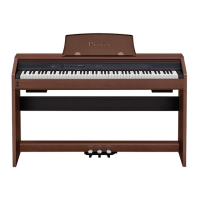
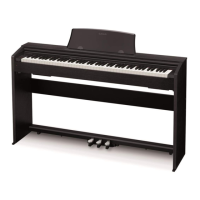
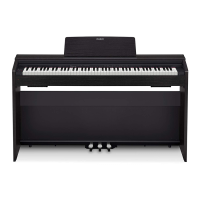
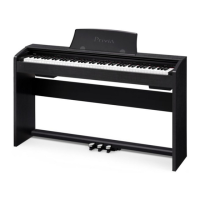
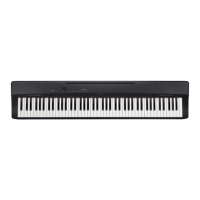
